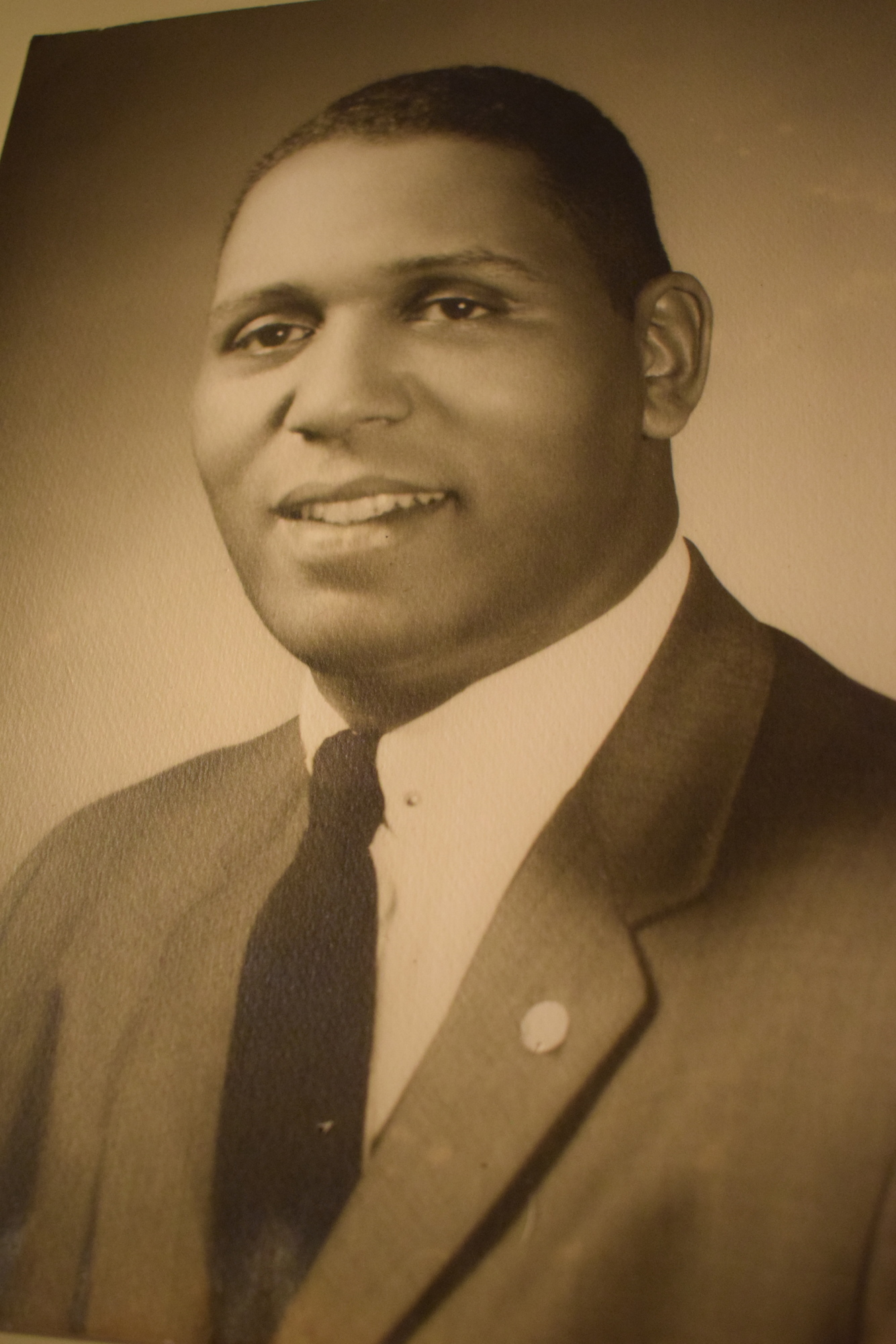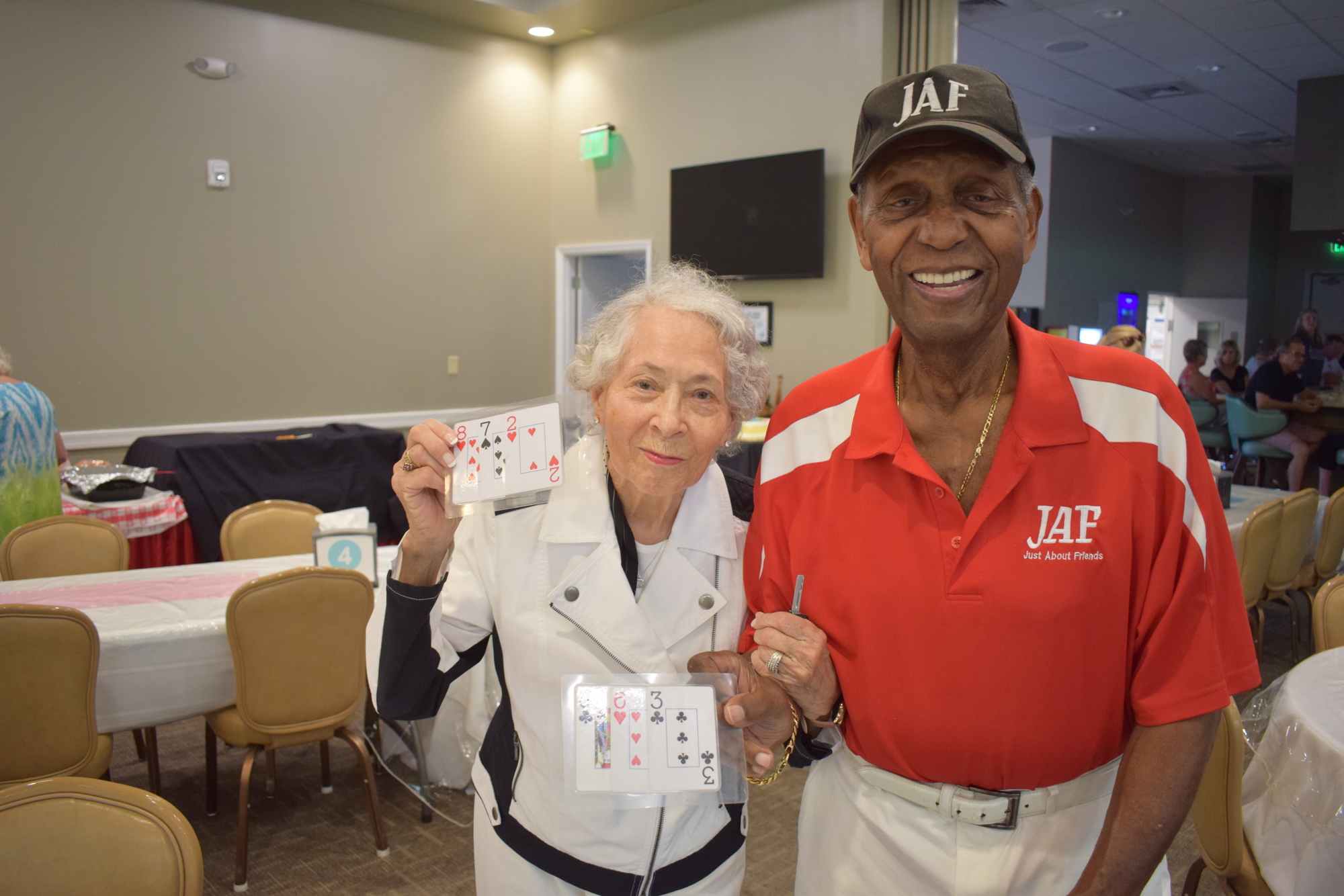- April 26, 2024
-
-
Loading

Loading

It was the only evidence Lakewood Ranch’s Leon Harris Jr. played professional baseball.
A brief listing in Baseball-Reference.com gives his name as having played with the Kansas City Monarchs during the 1953 and 1954 seasons.
The rest of the listing:
Harris was not alone in anonymity. That lack of recognition was shared by many other Black players in that era.
In June, Baseball-Reference.com, a site used by media organizations and broadcasters who cover Major League Baseball, made the following announcement.
“We have dramatically expanded our coverage of the Negro Leagues and historical Black major league players. Major Negro Leagues (from 1920-1948) are now listed with the National League and American League as major leagues. We are not bestowing a new status on these players or their accomplishments. The Negro Leagues have always been major leagues. We are changing our site’s presentation to properly recognize this fact.”
"What an experience that was in my awakening. It had the greatest impact of my life playing with the Monarchs. I saw where segregation was prevalent."
— Leon Harris Jr.
When Jackie Robinson joined the Brooklyn Dodgers in 1947, it created a void for Black players who still weren’t given the same opportunities and remained on Negro Leagues teams. Black players began to trickle into the major leagues, but teams like the Monarchs had plenty of talented players who were denied the opportunity to play MLB. The Kansas City Monarchs played in the Negro American League, but competing teams in that league, the Monarchs included, also barnstormed around the country, making it hard to keep statistics.
So the proudest moment of Harris’ professional baseball career won’t be read about in the history books.
Traces of 91-year-old Harris’ athleticism remain despite his advancing age. His long frame makes it apparent he once dominated at several sports. It is not surprising to learn that besides professional baseball, he played football, basketball and track at Hampton University in Virginia.
When stationary, he has the look of a much younger man who could still be a force on any golf course. But when he moves around his Summerfield home, he is somewhat bent over as his back betrays him. He hasn’t hit a golf ball, one of his favorite pastimes and a prime reason he moved to Lakewood Ranch in 1997, for more than 15 years.
But ask him about his favorite moment with the Monarchs, and his face lights up. He thinks back to his effort at Briggs Stadium in Detroit during the 1953 season.
Legendary Negro Leagues player and manager Buck O’Neil, who grew up in Sarasota, turned to Harris with the Monarchs trailing the Indianapolis Clowns 4-1 in the seventh inning of an American Negro League game. Harris was a right-handed pitcher, a big, strapping, 6-foot-3 kid that O’Neil called his “stopper.”
The Monarchs couldn’t afford to allow any more runs on this day. Harris needed to be perfect.

The scene itself was perfect for Harris. This wasn’t some tiny stadium in the Midwest where the Monarchs would visit for one day before moving to the next town. When the Monarchs traveled to the Motor City, they often played in the cavernous Briggs Stadium, which seated 52,416 and was home of the Detroit Tigers.
Briggs Stadium was nicknamed “The Corner” because of its location at the intersection of Michigan Avenue and Trumbull Avenue, and it was the site where the Yankees’ Lou Gehrig pulled himself out of the lineup May 2, 1939, ending what then was MLB’s longest consecutive games streak at 2,130. Tigers outfielder Ty Cobb used to roam the field when it was known as Navin Field, eventually becoming Briggs Stadium in 1938 and later Tiger Stadium in 1961. On July 13, 1934, at the stadium, Babe Ruth hit his 700th career home run off Tigers’ pitcher Tommy Bridges.
Harris knows the history from what he called the “Sanctioned League” because he said any league that wouldn’t allow Black players and limited access to Latin players couldn’t be called “Major League Baseball.”
To Harris, this was a major moment, though, as he strode to the mound with all eyes on him. About 25,000 fans attended that day.
“I remember it so well,” Harris says, poking the air with his finger as if he were selecting a moment in time. “It was important to me because my buddy Damon White, from (his hometown of Nyack, New York), was there in the stands. He lived just outside of Detroit at the time.
“That first inning, I struck out the side. Then I came back the next inning, and I struck out the side again, … six in a row. We were the home team in that game. (Harris explained the Monarchs were like the Harlem Globetrotters and often were the home team in other cities). And in the ninth I got the three straight outs. Six strikeouts, no hits.”
Pancho Herrera, who eventually played MLB for the Philadelphia Phillies, hit a grand slam in the bottom of the ninth as the Monarchs won 5-4.
“Unbelievable,” Harris says, shaking his head. “I felt I was great that day.”
In that first season of professional baseball in 1953, Harris learned more about racism and its effect on people. Growing up in the village of Nyack, New York, which had a population of about 1,000 at the time and which Harris says was pretty much half white and half Black, Harris says people had learned to get along. Although he couldn’t join them at the Y or with the white Boy Scout troop, where Black kids were not allowed, many of his friends were white.
In Nyack, he says he was part of an “elite” Black family because his father, Leon Sr., had become the first Black police officer in Rockland County in 1935 and later worked for charitable foundations. His father was well liked, and people would come from all around to watch him play pool. Harris remembers his father was so good looking that people in town called him “the Dark Clark Gable.”
His mom, Ruth, cleaned houses for $4-$5 a week.
“We didn’t have money,” Harris says. “I always worked during the summers when I was young.”
Harris’ talent on the athletic fields was apparent as he headed to high school, and his father cautioned him about the future.
“He always called me Junior. He would say, ‘Junior, in order to compete, you have to be three times better than the white man.’ He emphasized that, and I found out that was true.”
After a couple years of college, Harris married his first wife, Nancy (who died in 2020 at 92), and moved to East Providence, Rhode Island. It was there playing baseball with the Riverside Merchants that a St. Louis Cardinals scout saw Harris pitch. He signed for $4,999 and was sent to the minor leagues, where he soon injured his pitching arm. The Cardinals recommended that he play with the Monarchs to develop.
When he joined the Monarchs, he found many of his teammates were from the South, and they had seen racism at its worst. It was far worse than anything he had seen growing up in the Northeast, he says.
Fortunately, O’Neil, who became MLB’s first Black coach in 1962 with the Cubs, took charge on every Monarchs’ road trip, knowing the places where his players would be welcome and knowing which places to avoid.
The Monarchs were paid in cash, and O’Neil took care of their money. He was a baseball legend, a father figure, an accountant and a friend. Harris learned a lot from O’Neil about baseball and even more about navigating a difficult world.
“What an experience that was in my awakening,” he says. “It had the greatest impact of my life, playing with the Monarchs. I saw where segregation was prevalent. I saw the signs, ‘White Here,’ ‘Colored Here.’ But Buck handled men, and we were boys becoming men. He took care of it all, and he had charisma.”

Eventually, after a year and half playing with the Monarchs, Harris was on a road trip while Providence was getting hammered by a heavy storm. Harris called home to make sure his family was all right, and his youngest child, 3-year-old Yvonne, spoke to him, telling him how much she missed him and that the storm frightened her.
“Honestly, I am a softie,” he says. “I started crying. I missed my family.”
Harris decided it was time to come home.
Back in Rhode Island, he took a civil service test and an athletics director job in 1955 at the Rhode Island Training School for Boys.
But he remembers back when he was 15, his first “big” job was at the Sanitary Diaper factory in Nyack. He earned 85 cents an hour, and he saw the women who worked there under awful conditions. He also noticed the truck drivers were in a union and had better conditions. He talked to the women about joining a union, and a year after he left, they did.
Later in high school, he worked for Robert Gair Paper Co. as a sorter, making cereal boxes.
“You would shuffle them like cards, then they would go into a machine,” he says. “But you would see people who had their arms cut off. It was a sweatshop, and it was dangerous.”
In 1954, Harris went to Brown University to hear A. Phillip Randolph speak. Randolph was a labor unionist, civil rights activist and socialist politician. He eventually was head of the March on Washington, D.C., in which Martin Luther King Jr. delivered his “I Have a Dream” speech.
“I was so impressed,” Harris says. “It was such an influence on my life.”
He landed a job as the international representative for the American Federation for State, County and Municipal Employees and later served as president of the Greenwich Village NAACP chapter after moving to New York City and was president of the Inner City Labor Alliance.
After vacationing for several years in Florida, he made the decision to retire in Lakewood Ranch. He loved golf, the weather and spring training.
In retirement, Harris didn’t stop being involved and was one of the original members of the Kiwanis Club that met at Woodland Community Church. He was head of the Manatee/Sarasota Democratic Black Caucus for 10 years.
After all the years, Harris believes the U.S. still has a lot of work to do to progress as a society.
“You still have the darker-skinned people doing the menial jobs,” he says. “In 2075, that might be changed, but it’s going to take a long time. There have been gains, but they mostly have been gestures with no money attached.” For example, Harris suggests that the Social Security system could provide payments earlier for Blacks to reflect differences in life expectancies. “Our life expectancy is not expected to be as long as white males and females,” he says. “It might sound weird, but it can be done.”
In 2002, former MLB Commissioner Fay Vincent made his own attempt at reparations for as many Negro League players as possible. In writing his book, “The Last Commissioner: A Baseball Valentine,” Vincent sent out checks to former Negro League players based on sales of his book. Harris received a check for $214.64.
Harris keeps a copy of the check and figures he never will see another. He says that’s OK, though, because every day of playing with the Monarchs was glorious. He doesn’t expect anyone to ever find his statistics or records.
It does give him some solace that some understand the injustice done to the Negro League players.
“Ted Williams spoke at Howard University,” Harry says. “He was giving a commencement address. He said, ‘I love baseball, but if I had been Black, you never would have heard of me.’”